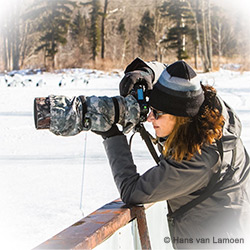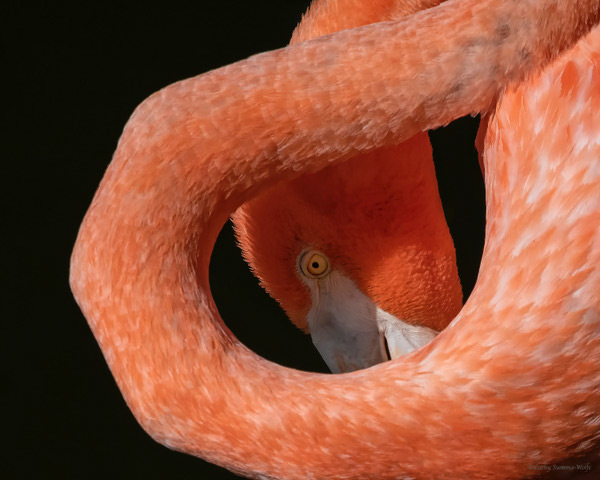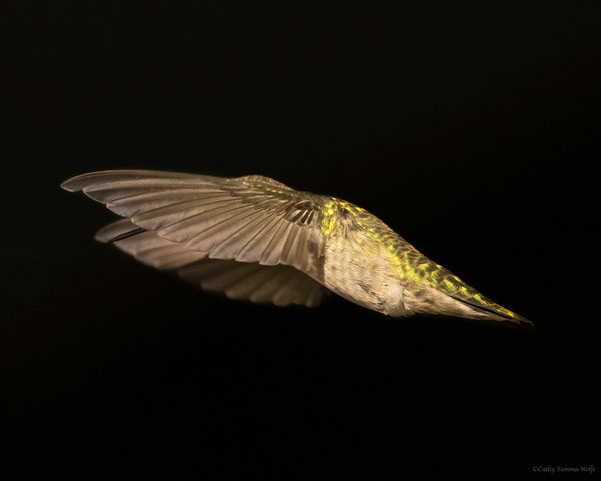 I recently had the pleasure of interviewing a very talented professional photographer based in San Rafael, California. Her name is Cathy Summa-Wolfe and she draws inspiration for her work from the natural beauty of her surroundings. As you browse through some of the photos from her collection below, I think you’ll agree that she’s quite accomplished at her craft. Thank you, Cathy, for spending the time to share your story with us and view of the world through your camera lens. Your body of work is truly inspiring.
I recently had the pleasure of interviewing a very talented professional photographer based in San Rafael, California. Her name is Cathy Summa-Wolfe and she draws inspiration for her work from the natural beauty of her surroundings. As you browse through some of the photos from her collection below, I think you’ll agree that she’s quite accomplished at her craft. Thank you, Cathy, for spending the time to share your story with us and view of the world through your camera lens. Your body of work is truly inspiring.
If you’d like to learn more about Cathy, please visit her website. You can also follow her on Instagram.
Can you please tell the readers a bit about yourself?
My professional background encompasses a 30 year career in graphic design, photography, marketing, and fundraising. I have an MBA from CSU Monterey Bay and studied graphic design at the University of California, Santa Cruz. My design and communications work has received numerous regional and national awards. I retired as the Executive Director of Advancement, Communications and Community Relations at the College of Marin in 2014 and have since been rediscovering photography and the creative arts.
Where do you call home?
San Rafael, California.
When did you first become interested in photography and how long have you been involved with it?
My interest in photography began at an early age when my father, who was a professional photographer, gave me my first camera. I used a camera throughout my career as a publicist. My training in graphic design informs the composition of my images. When I started working as a publicist early in my career, photographic skills were incredibly useful. I shot college events, staff portraits, classrooms, graduations, and the like. Even though photography was not my primary job, it was an essential part of my public relations function.
Are you formally-taught or self-taught?
In addition to my father teaching me camera and photography basics, I’m a fan of Ansel Adams and Fred Archer’s zone system and have taken several formal photography classes. Most recently, my favorite workshops have been through the Point Reyes Field Study Institute, with instructor Gary Crabbe, who worked with renowned photographer Galen Rowell. Continuing to learn and push the envelope of my visual vocabulary is important to me.
What inspired you to be a photographer?
The easy answer is that my father was my main inspiration. My father died in 2008. When I picked up my camera in 2014 to shoot something other than publicity, it was a way to reconnect with him. I also have always loved and been inspired by black and white photographers and photography. Dorothea Lange, Alfred Stieglitz, Robert Mapplethorpe, Joel-Peter Witkin, and Diane Arbus were some of my early inspirations. Some of these photographers really pushed an envelope and conventional norms, which was interesting to me. Their works made me realize the innate power of imagery even if it’s somewhat controversial. Ironically, these days I mostly enjoy shooting birds or abstracts in color and not people. I think that’s because I didn’t get a chance to enjoy nature much when I was working full time. Shooting birds, in particular, is a great excuse to become absorbed in the beauty of the natural world and then share what I’ve seen with others through my photography.
In regard to marketing, how much of your time do you dedicate to social media? Do you use any special programs or services?
I try not to spend too much time on social media. It’s fun but it can be a time suck and there are so many options to choose from: Instagram, Facebook, FOAP, Pinterest, Twitter, WordPress, and LinkedIn among others. My favorite social media platform for photography is Instagram. I’ve met people from all over the world on Instagram and really enjoy communicating with them. I use my Facebook account for family and friends mostly, although I have a few FB followers and new acquaintances that like to see my photos. I like FB because I also can share stories that I like, mostly about birds and the environment.
As far as special software, I use Hootsuite to schedule posts to Instagram and Facebook in advance. It’s more efficient to schedule posts instead of posting every day manually. I try to use my time efficiently. The first year that I was on Instagram I decided to challenge myself by posting a bird a day for one year. My slogan or tagline was “Another day, another bird.” I posted photos from and sometimes during my travels to Ecuador, Japan, Panama, Mexico, and around the U.S. and was amazed when over 1,000 people started following me. Today, I have over 12,000 followers and my account is still growing. My initial intent was simply to learn how to use Instagram, but I ended up becoming engaged in communicating with people from all over the world who have similar interests in avifauna.
What has been your most memorable session and why?
I think it was the months that I spent photographing hummingbirds at our ranch in San Juan Bautista. I stayed with the subject over an extended period of time and got some interesting images out of it. Most often, when people think of hummingbirds, they think of them in the context of pretty flowers. By shooting the birds at sunset, when the light turned the background black, the birds look more dramatic and fierce, and the feather detail is pretty amazing too.
When shooting subjects, what do you find most challenging?
I think shooting portraits of people is the most challenging. Most people do not like photos of themselves. My father taught me how to pose people and light them to get flattering effects. Another trick that I sometimes have used is to flop the photo so that it is more like looking in a mirror instead of the reverse.
What’s the best part of being a photographer?
At one of my first gallery exhibit openings, I was walking around and overheard total strangers who came to see my show making some wonderful comments about my work. As someone who did publicity shots for years, it was really gratifying to hear people responding positively to my more artistic photos.
How do you keep your photography fresh and how do you stay motivated to keep on learning?
Seeing other photographer’s works keeps me motivated. With the advent of digital equipment and social media many more people are sharing their images through social media and it’s astonishing how good some of the non-professional work is out there. There are a few wildlife and nature photographers that I follow regularly on social media whose work I find very inspiring.
Do you visit any photography related websites or blogs on a regular basis and if so, which ones?
When I’m looking at buying equipment, I check out reviews on a few websites, including Ken Rockwell and the SLR Lounge because they are really thorough and get into the nitty-gritty of specs, settings, and overall feel of the equipment. Other than that, I subscribe to Photography Forum, National Geographic, and Communication Arts magazines. I also like to go to museums and galleries to check out photography exhibits. I’m old school that way. I like to see things in print.
What is one piece of advice you would like to offer a new photographer just starting out?
Figure out what you have to say and find a way to express it visually through your work.
Share with us your favorite image and why.

This was such an unexpected shot. I didn’t know that American Flamingos (Phoenicopterus ruber) necks were so flexible! I found a small flock of wild flamingos in Cancun in the early morning in mangroves at a resort that we were staying at that had expansive wetlands on the property. The light was perfect and they were preening and grooming. I had never seen wild flamingos before. In southern California where I went to high school in Ventura, neighbors had flamingo lawn ornaments and they were a symbol of kitsch. I guess because they were over-represented I didn’t take them “seriously” until I saw them in Mexico.
What do you hope viewers take away from your images?
The wonder of avifauna and a greater appreciation for the fragility of our natural world.
What type of camera(s) do you shoot with?
I mostly shoot Nikon cameras, D850, D810, and an older 7100. Of those three, the D810 is my favorite camera body. It’s a real workhorse and renders raw images beautifully, even in low light. (If you’re wondering why I didn’t pick the D850, because it’s newer, quite honestly I’m having issues with excessive noise on the D850 and am not happy with the images, so it’s going back to Nikon for repairs. Also, when I travel to shoot birds, in addition to my birding rig, I take my Sony mirrorless A6000 with a 16-50mm and a 300mm prime lens. The little Sony is awesome for landscapes and wider angle shots and paired with the prime–it can even decently capture birds in a pinch.
What is your favorite lens?
Currently, my favorite lens for birds and wildlife is the Nikon AF-S Nikkor 200mm-500mm F/5.6 ED VR. (I’ve also owned the Tameron 150-600mm, the Sigma 150-600mm, and the Sigma 150-500mm and the Nikkor is the sharpest of all.) It’s a bit of a beast to handhold but tack sharp and amazingly fast at acquiring and maintaining focus on moving objects, like birds in flight. I say it’s heavy, but not nearly as heavy as a prime lens would be, but heavier than the other telephotos that I’ve owned.
What is in your camera bag?
Snacks and something to drink (haha). But seriously, I probably carry too much in my bag, but that’s the girl scout in me–be prepared. To start, I have a lens cleaning kit, including a small blower attached to a soft-bristled brush, lens cleaning solution, lens tissue, and a cleaning cloth. I have four extra lithium batteries, six extra 32GB or 64GB memory cards, an extra lens cap, a polarizer filter, a Nikon 95mm Neutral Color NC Filter in case of rain weather (because unfortunately, the 200-500mm is NOT weatherproof), a mechanical compass and whistle (in case I get lost when out of cell range–see what I mean about being a girl scout lol?), portable solar phone charger and cable, gloves, wool balaclava, sunblock, pocket knife with tools, business cards, ID, some cash, a nylon hiking blanket to sit on or use for cover, hand wipes, and a little first aid kit.
What is your favorite photography accessory?
My camera and lens combo are pretty hefty. If I had to choose just one accessory I’d say it’s the Black Rapid RS-Sport Strap, which takes the weight of my camera off my neck. The cross-body design of the strap allows me to use my camera’s tripod collar with an arca plate and hook the collar foot on my belt taking all the weight off my shoulder and neck while also allowing me to carry the heavy gear for long periods without fatigue. I’ve been on trips where I’ve walked 8 hours a day for many consecutive days with my heavy equipment, so anything to keep the weight manageable is very important to me.
What piece of equipment would you most like to get but don’t have yet?
Even though the additional weight might be a challenge, I’d love to try my luck with a 500mm prime lens. Most of my favorite wildlife photographers use prime lenses.
How important is Photoshop or other image editing software in your final images?
I shoot in raw so post-processing is very important. I use Adobe Photoshop for my post-processing, but I think that it isn’t perfect for Nikon images as there is a visible loss of image quality. When I view an image in Photoshop compared with viewing it in Nikon View NX software, the lost is evident but Nikon’s software has limited features for post-processing raw images.

Can you tell me about one of your favorite or most memorable photo shoots?
In 2016, I took a series of hummingbird photos for a solo exhibit at the Viewpoint Photographic Art Center, in Sacramento, California. I opted to shoot the images in natural light over a three month period at our ranch in San Juan Bautista. I discovered that there is about a 45 minute window right before sunset when the light hits hummers feeding on my front porch in such a way as to mimic a flash, but better than flash (my opinion) resulting in images with a more organic feel. Hummingbird wings beat at about 50 beats per second so stopping motion in relatively low light without a flash is tricky. I spent months honing the technique of capturing these little birds in mid-flight or mid-blink. It was a labor of love.
What made it so great and why did you like it so much?
I was just getting into bird and wildlife photography at the time, and getting used to a long telephoto lens. It was the first time that I started looking at birds as subjects in the abstract, as interesting shapes and reflections of light. The hummingbird series is on my website.
Do you have any projects that make you look back and shake your head? What made the experience so unpleasant?
Believe it or not, I don’t remember any huge fails or disasters in my work. I did have difficulty with a cloth background once when I shot an executive portrait in the executive’s living room. I couldn’t get the darn fabric unwrinkled with my steamer. I had to smooth the wrinkles and shadows out in post-production which was a pain.
Are there any areas of photography that you have yet to pick up on that you’d like to learn?
There are some really interesting post-production techniques using textures and layers that I’d like to explore.
Do you see yourself as a photographer many years down the road?
One of the great things about photography is that it’s something that you can do at just about any age. Even if I get tired of hoisting 10+ lbs of equipment several hours a day, I could see myself using my little mirrorless camera or even my iPhone for photography. I’ve seen some extraordinary photos coming out of phones these days.
Great interview. I know Cathy from COM, so seeing her in a new light was delightful.
Thank you – Kate
Hi, Kate, I am very happy to hear that you enjoyed Cathy’s interview. Cathy’s photography is very thought-provoking and it was interesting to meet the woman behind the images.
Beautiful article!